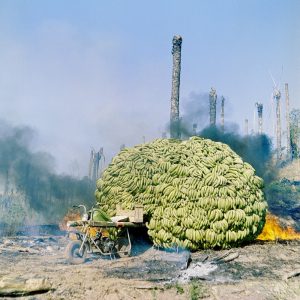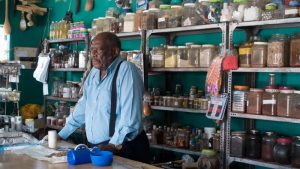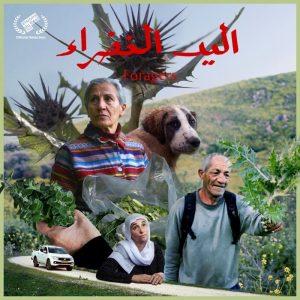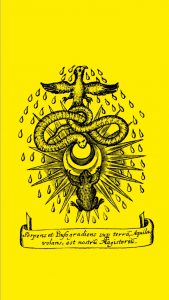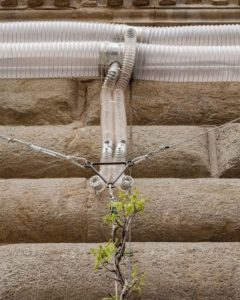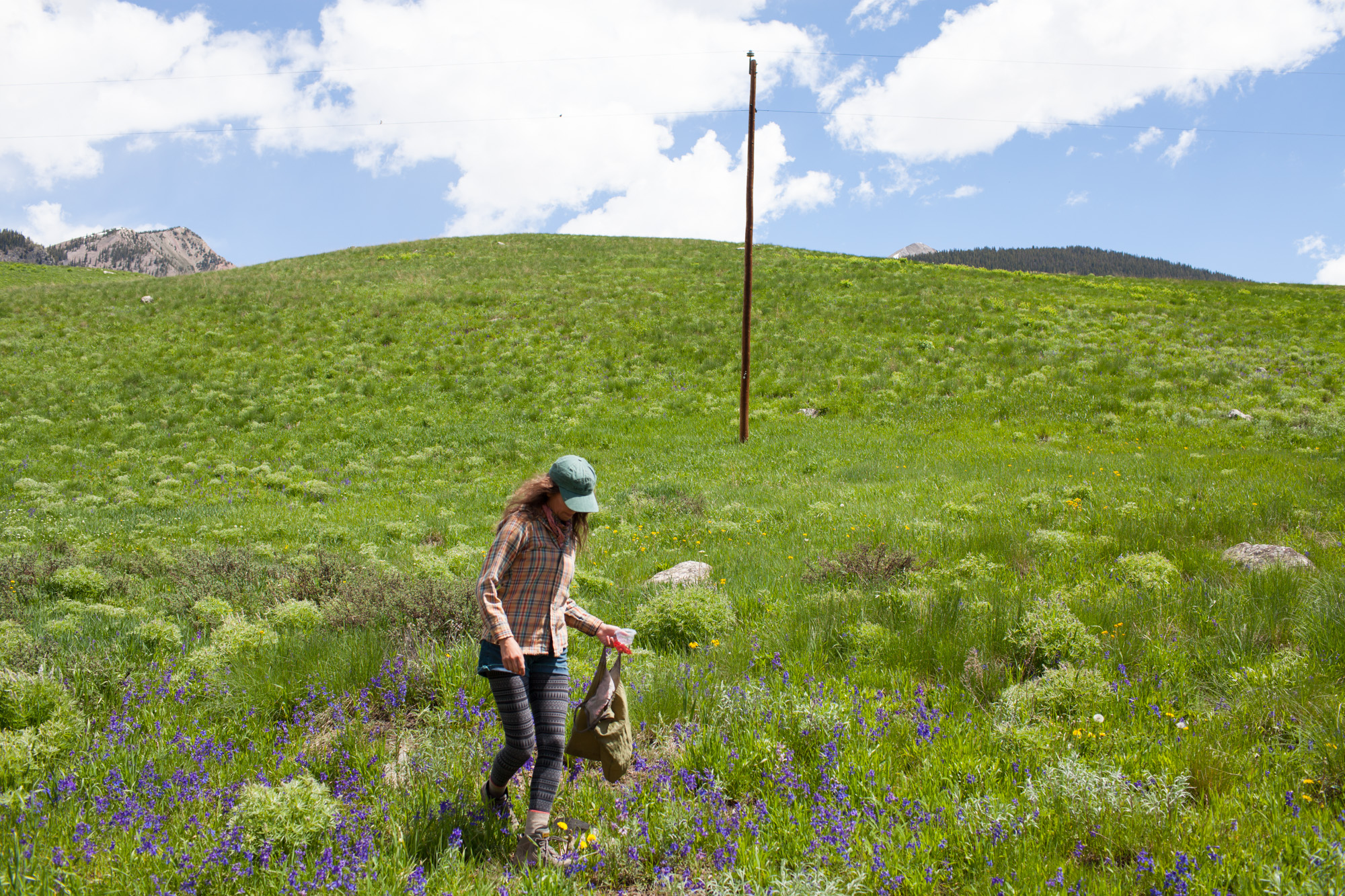
Field work in a research meadow at the Rocky Mountain Biological Laboratory in Gothic, Colorado, photo credit Dan Phiffer
Ellie Irons is one of those rare artists whose work opens your eyes to what is just under your nose but remains unnoticed. Some artists bring the spotlight on data collecting, others on corruption, corporate malpractice, or land grabbing. Ellie forces us to consider the value of the wild and often reviled urban ecology that sprouts all around us. She uses galleries to provide asylum to wild and invasive plant species, extracts the pigments from local weeds to paint their map-like portraits, photographs the vigorous life growing inside vacant lots, and is actively collecting the seeds of the most humble but robust plants that mirror population flux in globalized cities.
Irons’s practice is charming because it inspires a new form of romanticism that has the potential to give informal urban green spaces the respect they are due. But it is also a crucial and thought-provoking work that reminds us that the anthropocene is far more than everyone’s favourite buzzword, or a calamity striking people living at the other side of the world. It is a sword of Damocles that sooner or later will force us to make difficult choices and reevaluate our relationship with nature.
Ellie Irons studied art and environmental science in Los Angeles, she is now a multidisciplinary artist and an adjunct professor at Brown University in Providence, Rhode Island. When she is not busy teaching, doing workshops or preparing exhibitions, she still finds some time to answer my many questions:
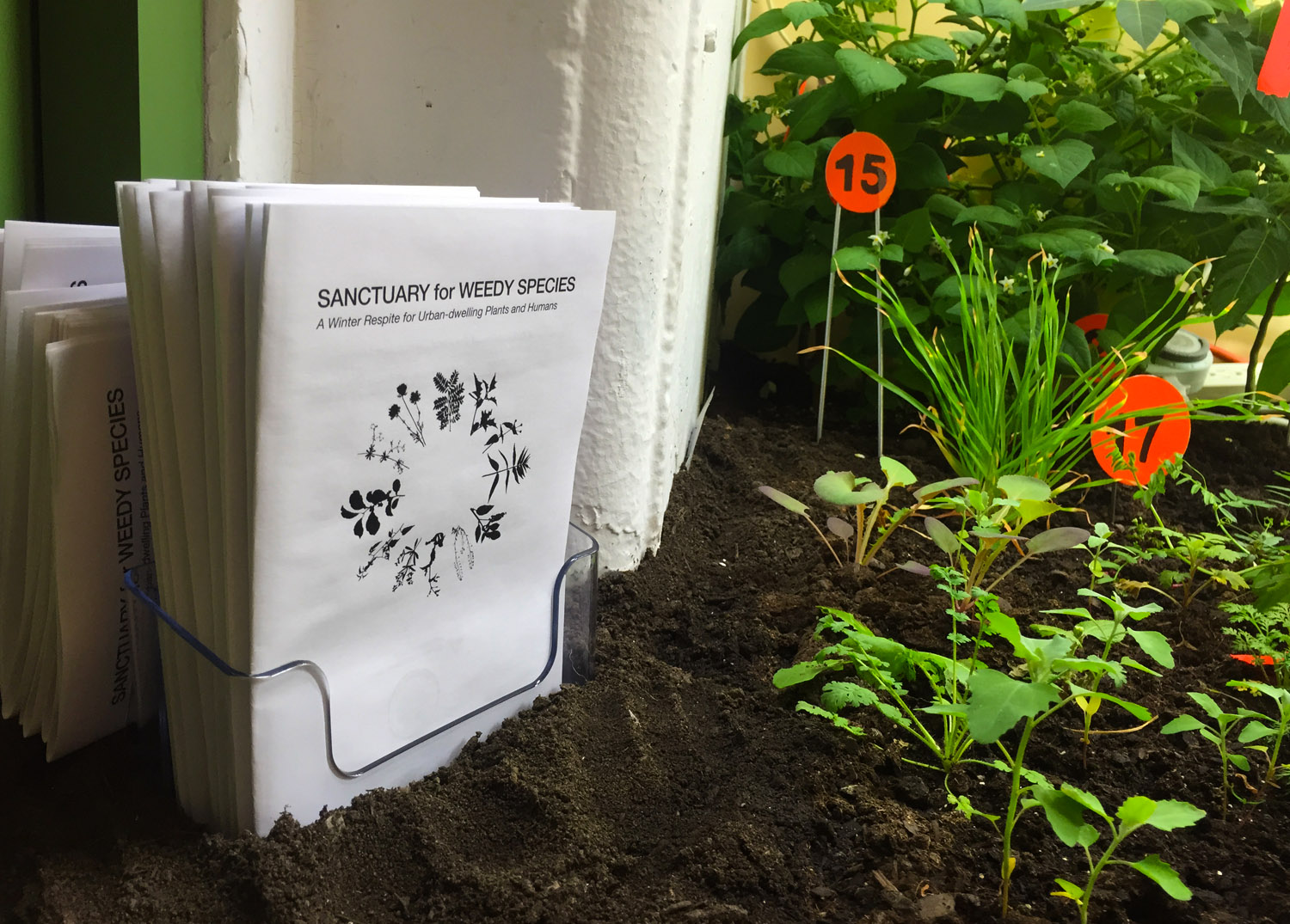
The Sanctuary for Weedy Species, 2015, part of Rail Curatorial’s Social Ecologies exhibition in Industry City, curated by Greg Lindquist. Photo credit Ellie Irons
Hi Ellie! You made a Sanctuary for Weedy Species and allowed them grow undisturbed. How do these plants behave when left to thrive? Did you monitor their growth and had to intervene at some point because some were overtaking others?
Yes, that’s right. My Sanctuary for Weedy Species is an ongoing project that got its start as part of the exhibition Social Ecologies. For that show, curator Greg Lindquist offered me the opportunity to “activate” a gallery floor covered with soil (the project has now moved on to the Emergent Ecologies exhibition at Kilory Metal in Fort Greene, Brooklyn).
I decided to base my approach to this opportunity on my interest in spontaneous urban plants (often described as weeds). I gathered more than 200 young wild plants from the edges of construction sites and street tree pits in my then-neighborhood of Bushwick, Brooklyn. I selected plants from places that I knew would soon be “cleaned up” or paved over. I transported these young plants to the gallery and embedded them in the soil covering the gallery floor, where they lived for the next 2.5 months.
Growing tough, weedy plants in a controlled gallery setting is not quite as easy as it might sound. For one thing, plants growing outside have allies that are hard to replicate in a clean, isolated indoor space. Outdoors, predators like lace wings and ladybugs devour herbivorous insects, and regular rainstorms and fluctuations in temperature also help hold their populations in check. In the warm, consistent gallery space, aphids and other plant-hungry insects flourished.
I was lucky to have a very conscientious gallery attendant who took on the role of aphid predator, regularly spraying the plants with neem oil and washing them with water and other organic, insect-deterring solutions. Otherwise the various plants played fairly nicely together, except for a few allelopathic plants (like ailanthus and honey locust) which killed off everything in their vicinity and took over their respective patches. But I didn’t do any “weeding” other than weeding out some of the hungry aphids!

Feral Landscape Typologies. The rise, fall and rise of a lot at the corner of Irving Avenue and Cooper Avenue from May-October 2015. Photo by the artist
I’m fascinated by the ‘invasive species’ discussions. Your work makes a lot of sense to me but i’m wondering how scientists might react to your ideas about invasive species. Have you discussed with some of them? Is the scientific community agreeing on the necessity to eradicate all invasive species because they will lead to environmental damage? Or is there a lot of dilemmas and debates there as well?
The scientific community, as I’m familiar with it, seems to be of many minds when it comes to weedy species. I ask specialists like biologists, ecologists, foresters, and botanists about these issues whenever I get the chance! I’ve found that some don’t even like the term invasive, preferring a to describe species as native or non-native, and only “invasive” in certain, very specific contexts. I like this approach because it gets at the fact that a particular plant can be highly aggressive in a degraded ecosystem in which it has just arrived, but play a perfectly normal, beneficial role in another context.
Some of the plants and creatures we describe as invasive in certain parts of the United States are actually endangered in their home ranges, which may be under threat from sea level rise, unpredictable climate fluctuations, or more direct human impacts like urban development or agriculture. Should we deny these species a niche in a new place when the place they called home has become untenable?
I think the question deserves another look, rather than a knee jerk “no” response. That knee jerk “no” is something I do sometimes encounter when I talk with scientists about these issues. There seems to be a lot of concern around loosening the binary between native and non-native and saying “maybe some non-native plants are ok”. Some seem to feel that thinking this way sends us off down a slippery slope that will lead the devaluing of historic ecosystems, making restoration even more difficult than it already is. My views on this are still evolving, but taking into account the range of perspectives I’ve encountered over the years, I tend to fall on the side of life. The toxic and/or resource intensive methods used to eradicate invasive plants, at least in urban spaces where greenery is often scare, could better be spent in other ways. Especially given the fact that these plants, whether native or not, are still providing basic, valuable ecosystem services like soil stabilization and creation, air quality improvement, habitat for non-human animals, and even health benefits (mental and physical!) for us humans.
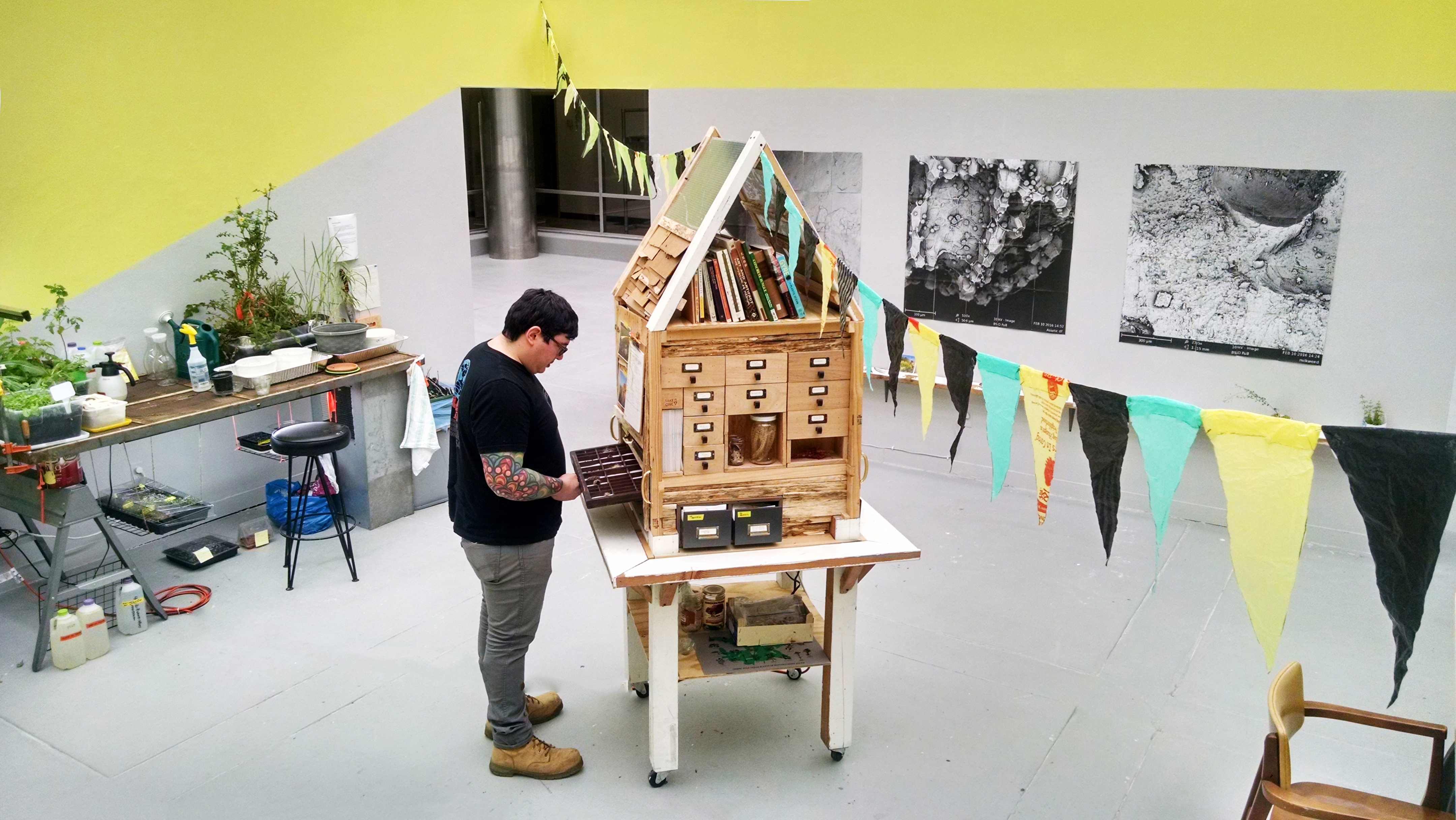
The Next Epoch Seed Library at William Paterson University as part of the exhibition Living Together: Nurturing Nature in the Built Environment. Photo credit Anne Percoco
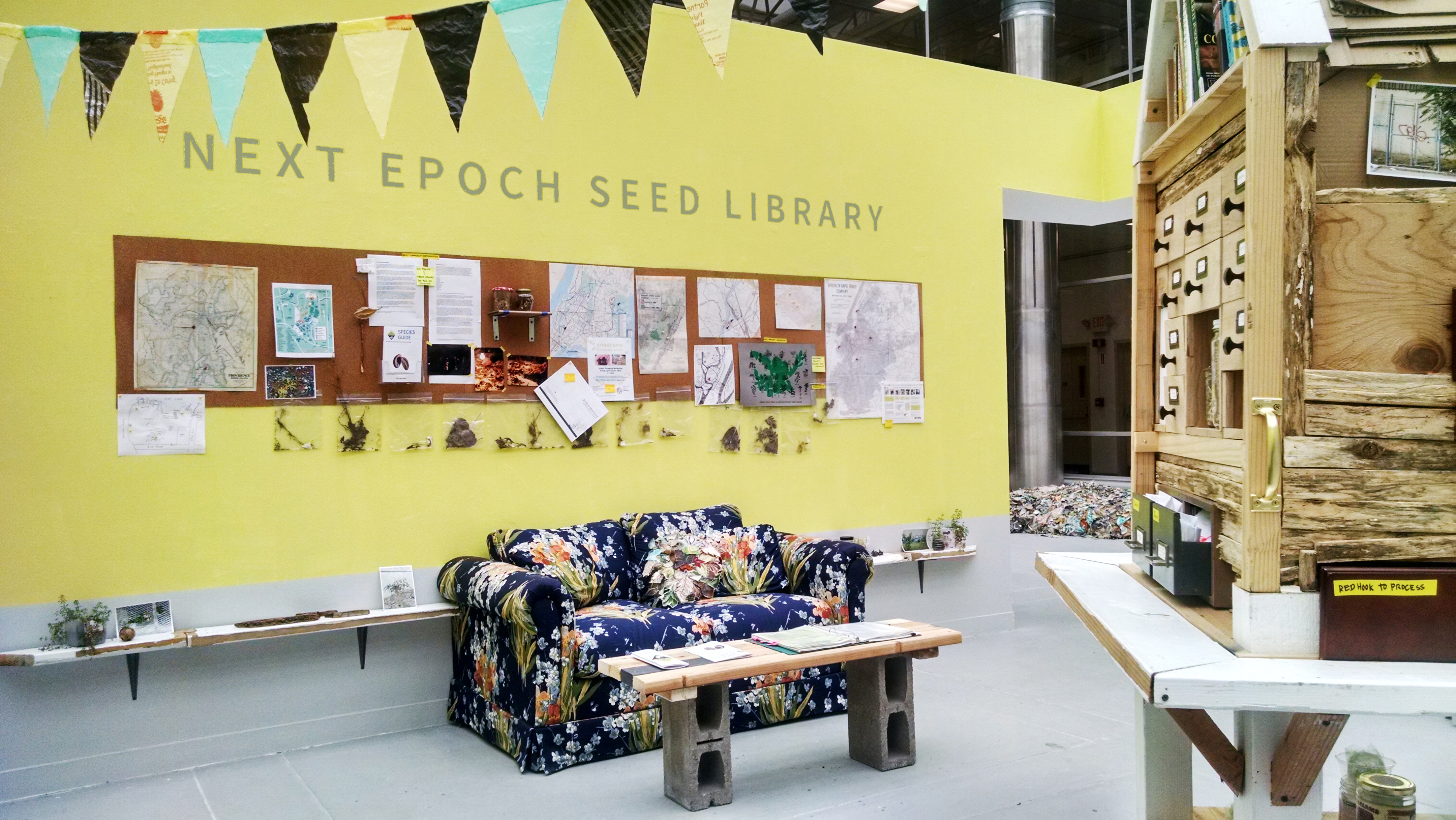
The Next Epoch Seed Library at William Paterson University as part of the exhibition Living Together: Nurturing Nature in the Built Environment. Photo credit Anne Percoco
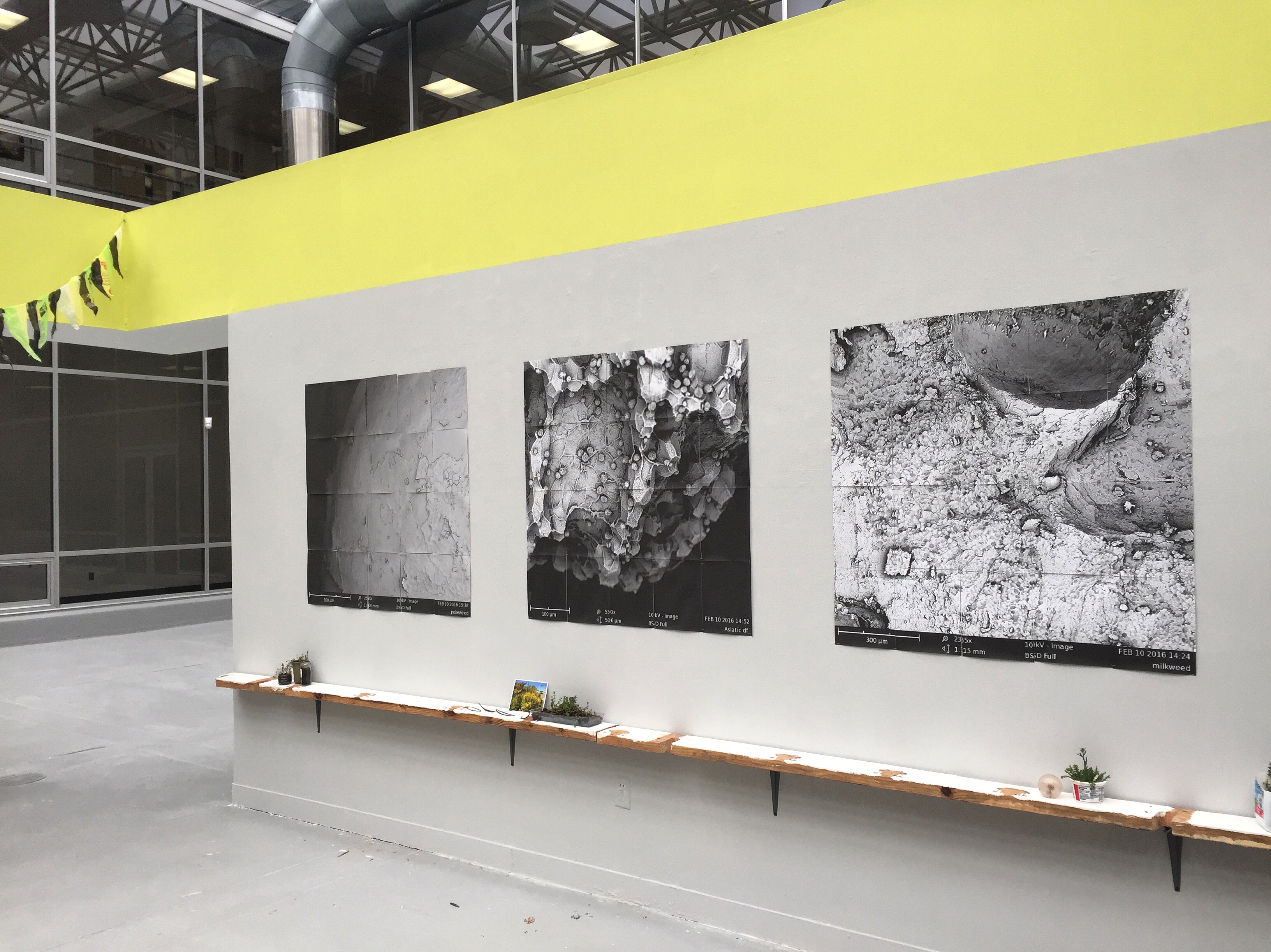
The Next Epoch Seed Library at William Paterson University as part of the exhibition Living Together: Nurturing Nature in the Built Environment. Photo credit Anne Percoco
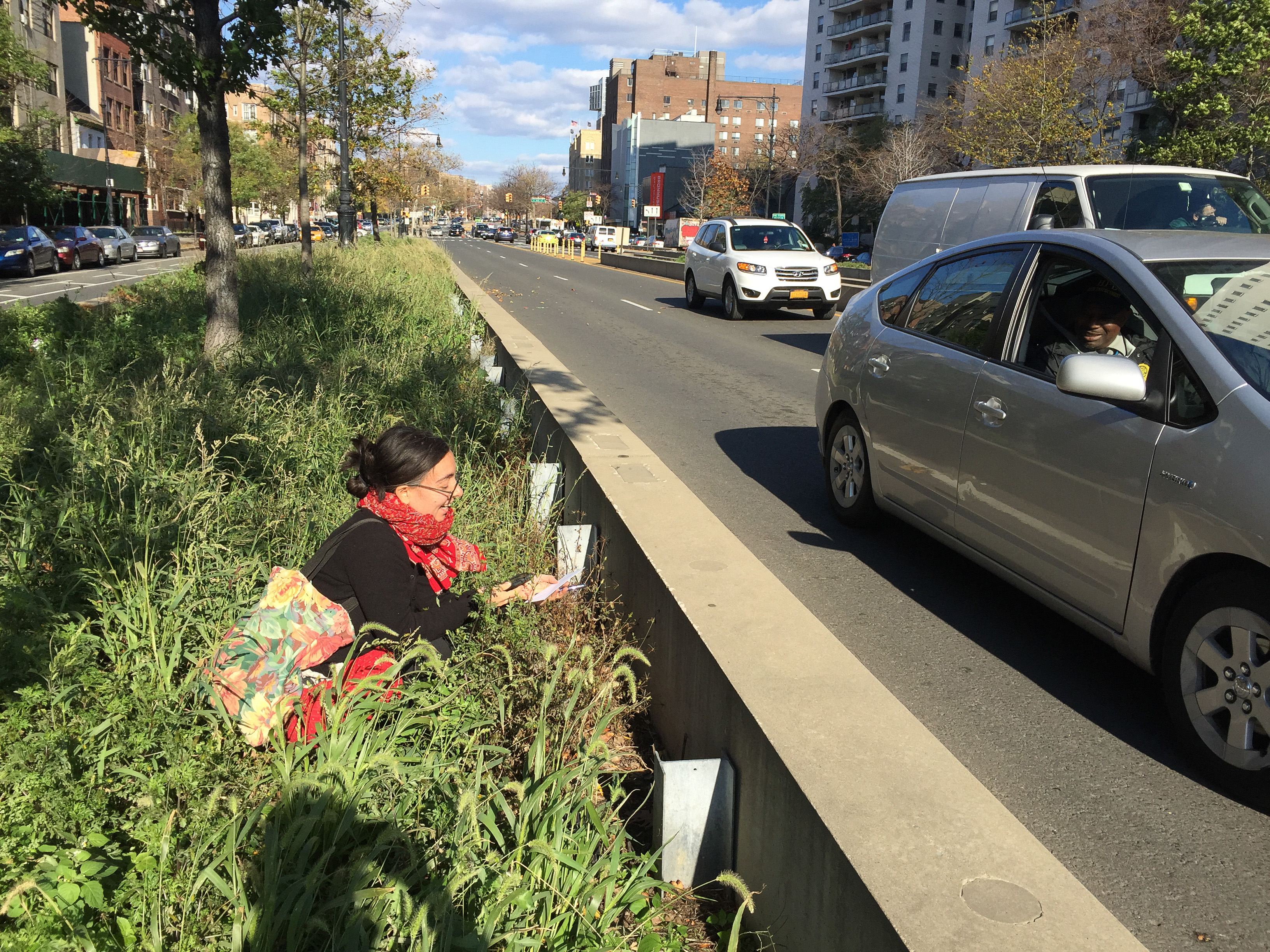
Anne Percoco gathering seeds for NESL in a traffic median on Grand Concourse in the Bronx. Photo credit Ellie Irons
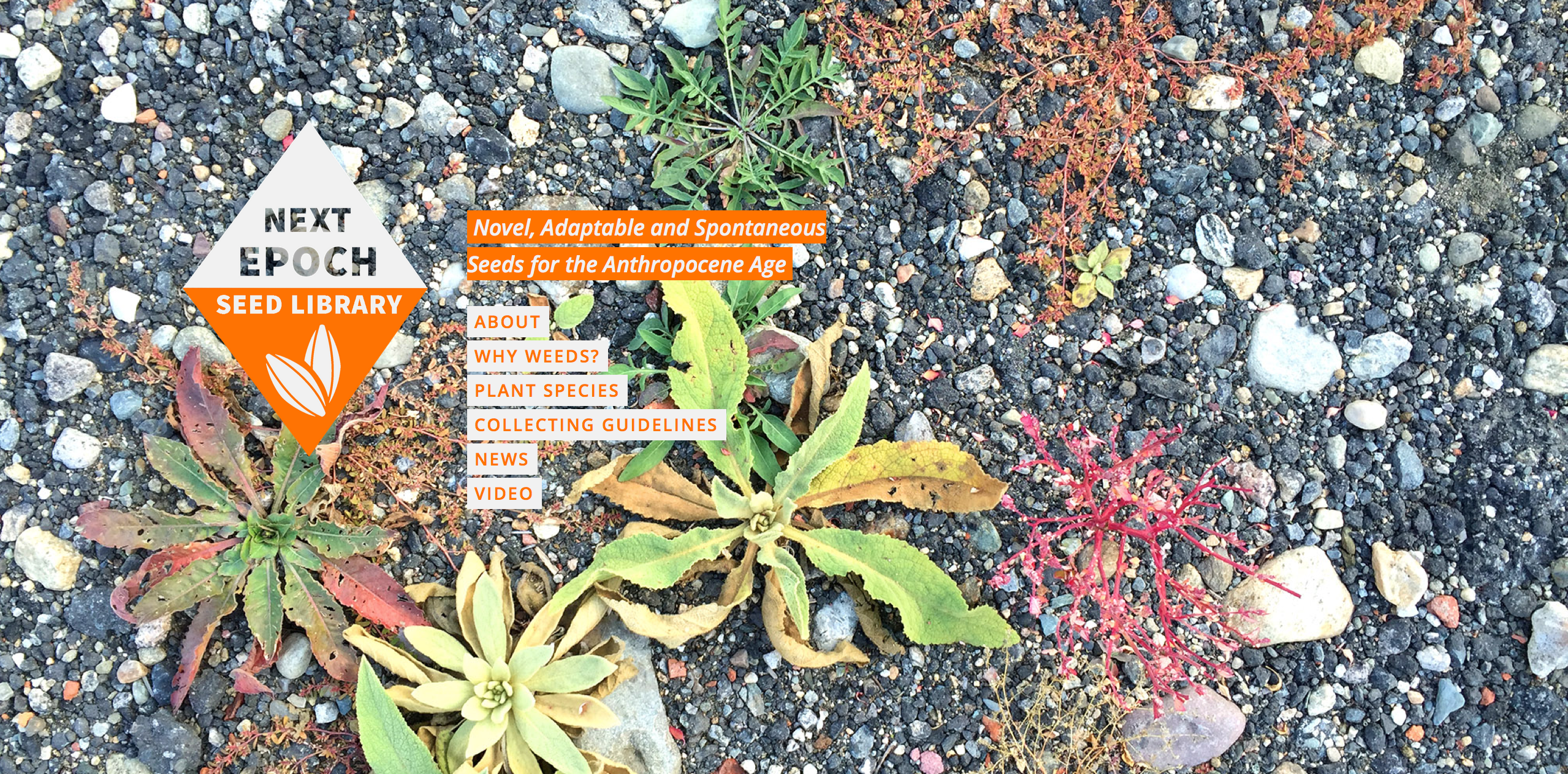
Screen shot of the NESL website
I was really charmed by your Next Epoch Seed Library and the way it gives nobility to weeds. Could you tell us what you’re trying to achieve with this work?
How big is the library? Do you accept plants from outside NYC?
The Next Epoch Seed Library (NESL) is one of my newest projects, initiated about a year ago with my collaborator, Anne Percoco, and a range of other artists who have contributed seeds and other ephemera. NESL focuses on collecting, storing and sharing seeds from plants that tend to live in close association with dense human populations or in areas heavily impacted by human activity.
Growing where others can’t or won’t, the species held in our seed library are those best adapted to live in the long shadow humans throw on the landscape. They supply important ecosystem services to humans and nonhumans alike, improving habitat in areas where legacy ecosystems have been disrupted through development and industry. Too often the plants living in these environments are the very plants cities and private landowners pour resources and herbicides into eradicating, “cleaning up” a “messy” life form in favor of the neat and the dead. Recasting these weedy species as companion plants for Anthropocene age, we use NESL as a vehicle for softening the edges of limiting binaries like native/non-native and nature/culture.
Through presentations, workshops, seed-swaps and exhibitions, we encourage viewers and participants to engage with their local habitat and reflect on their own role in the adaptation and success of these plants.
We’re still working out our policies around spreading species that are not yet introduced to a particular location. So far we’ve collected and exchanged only locally, although we do have an open invitation for interested parties to send seeds to us from anywhere. Personally I think I would only be comfortable offering those seeds back out to a community living in an ecosystem where the seeds in question are already naturalized. Certainly we’ll hold any species of seed in our library, but certain species might go in a reserve section temporarily, or only be offered back to people in certain regions. The project is very site-specific, in that we make a special, hyper-local collection of seeds for each location where the project is displayed. We need to do a thorough tally, but at the moment I think we have at least fifty species represented in the library, for a total of maybe 5,000 seeds, although that is always in flux as visitors take out and deposit seeds.
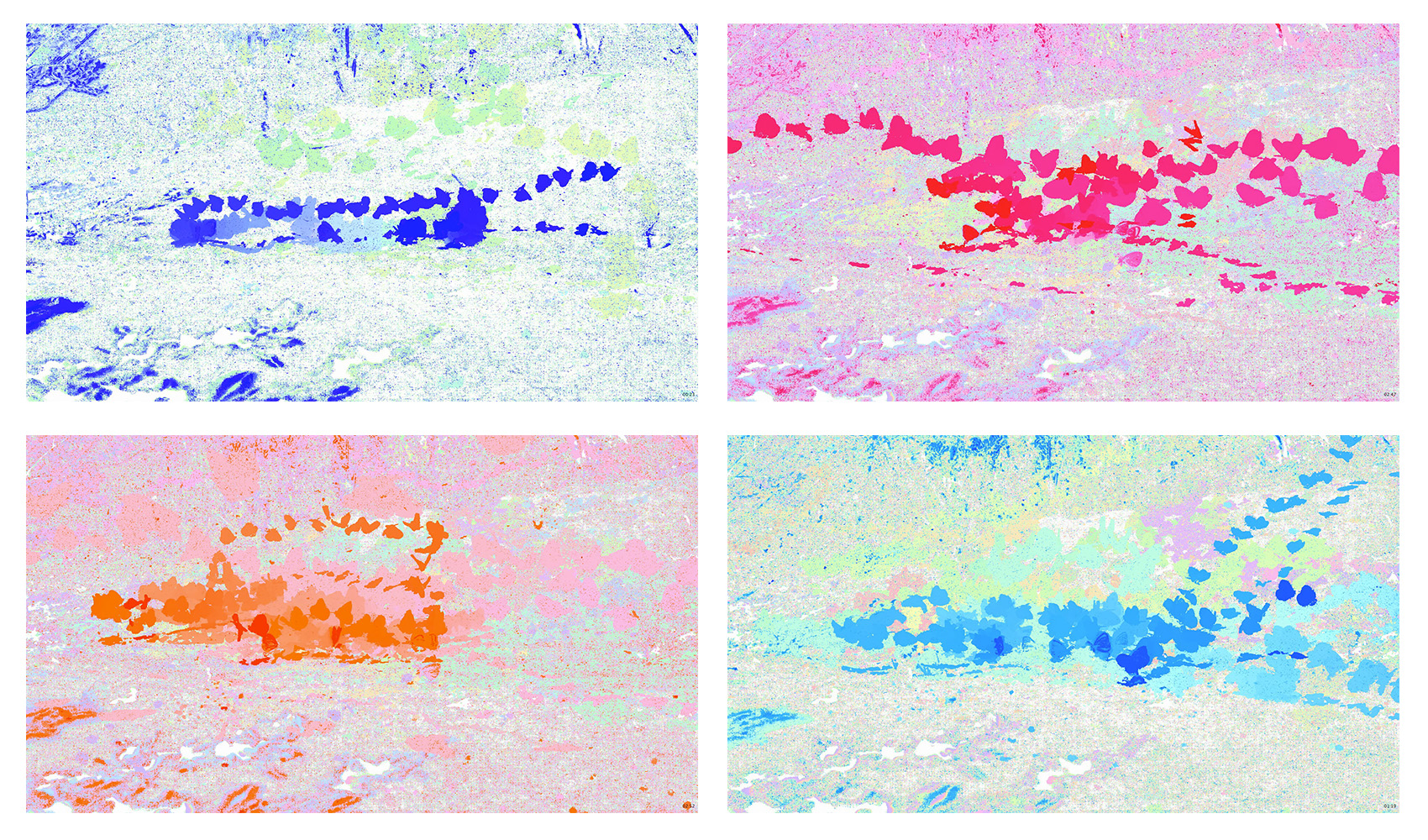
Stills from Flight Lines (Butterflies, Bank of the East River, Gothic, Colorado, 6/23/15, 10:50 am), 2015, created during an residency at the Rocky Mountain Biological Laboratory (with Dan Phiffer)
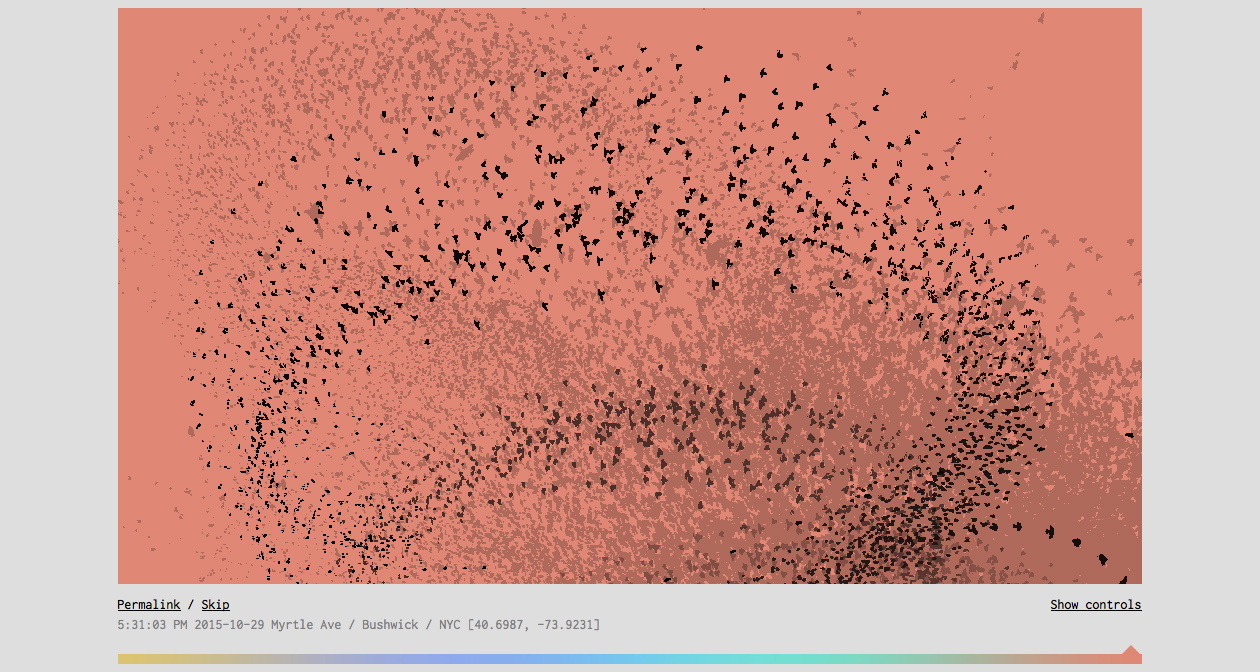
Screen shot of Flight Lines as commissioned by turbulence.org, Ellie Irons and Dan Phiffer, 2015
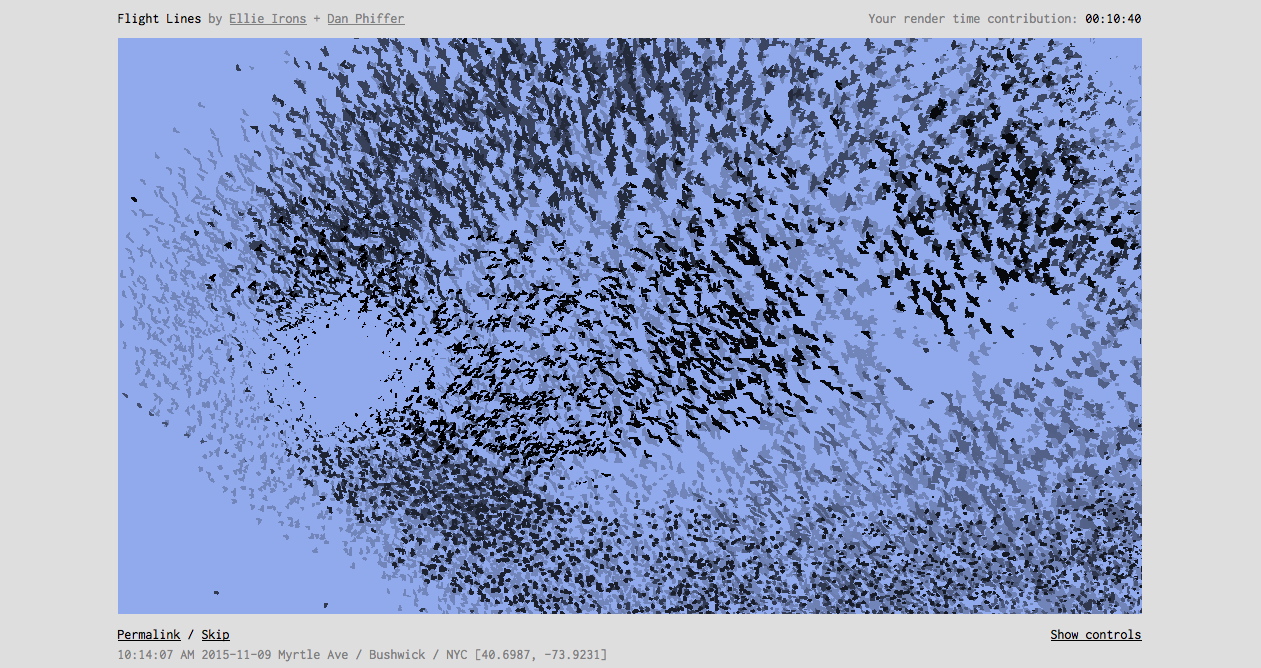
Screen shot of Flight Lines as commissioned by turbulence.org, Ellie Irons and Dan Phiffer, 2015
Together with Dan Phiffer, you developed Flight Lines, a computer vision project that monitors the sky ecology of the Anthropocene. What have you learnt from these observations?
Where are the cameras located? Why did you chose these locations rather than others?
Flight Lines has taught us that there is a lot be learned about the ecology of the spot you are standing in by looking at the patterns in the sky above. It started when I was lying on my back in my parents’ yard in Northern California, watching dragonflies wheel overhead. They were making these amazing looping lines, and I starting trying to sketch their curves and arcs. I wasn’t satisfied, so took a quick video, then played the video back on my computer, tracing the movement of a single dragonfly frame by frame. I loved the line that emerged, but it was a tedious process. Dan saw me doing it, and realized that some automation might be in line. Soon he’d come up with a Processing script that allowed us to feed video in and get out a frame by frame drawing of what the camera saw passing through the frame.
Since then we’ve deployed Flight Lines in a variety of settings, from the abundant skies of the Rocky Mountain Biological Laboratory in Colorado to the rooftops of Brooklyn. The “sky signature” of each location is unique, reflecting the activity on the ground. Highly urbanized landscapes are full of lines made by machines piloted by humans, of bit of drifting trash, and of synanthropes like starlings and pigeons. They can be very striking to look at, but are generally more geometric and ordered, and less abundant (although the pigeon fanciers of Brooklyn tip the scales in terms of abundance at certain hours). Landscapes less heavily dominated by human activity often have a higher diversity of lines and shapes, more of them organic. In very remote places at certain times (like the Rockies in early summer) our algorithm couldn’t cope with the abundance of flying creatures- after five minutes the whole screen turned to gray, so Dan developed a new version that cycles through the spectrum and can convey that level of abundance more effectively.
Our newest iteration of the project is a light-weight, raspberry-pi based version that lives on the roofs of New York City and feeds footage into a website commissioned by turbulence.org. This project, which is also part of Jamaica Flux currently, allows us to crowdsource the processing of our footage. Visitors to the site watch a chunk of sky for ten minutes, generating a series of still frames that give us a sense of what transpired in a particular chunk of time. Currently we have cameras in Central Park at the Arsenal Gallery in Manhattan, at the Jamaica Center for Arts and Learning in Jamaica Queens, and on the roof of Flux Factory in Queens, although we need to do some maintenance on them! Our camera locations are chosen by where we can get a good view of the sky and (if possible!) an internet connection. We’re interested in just about any chunk of sky we can get our camera pointed at!
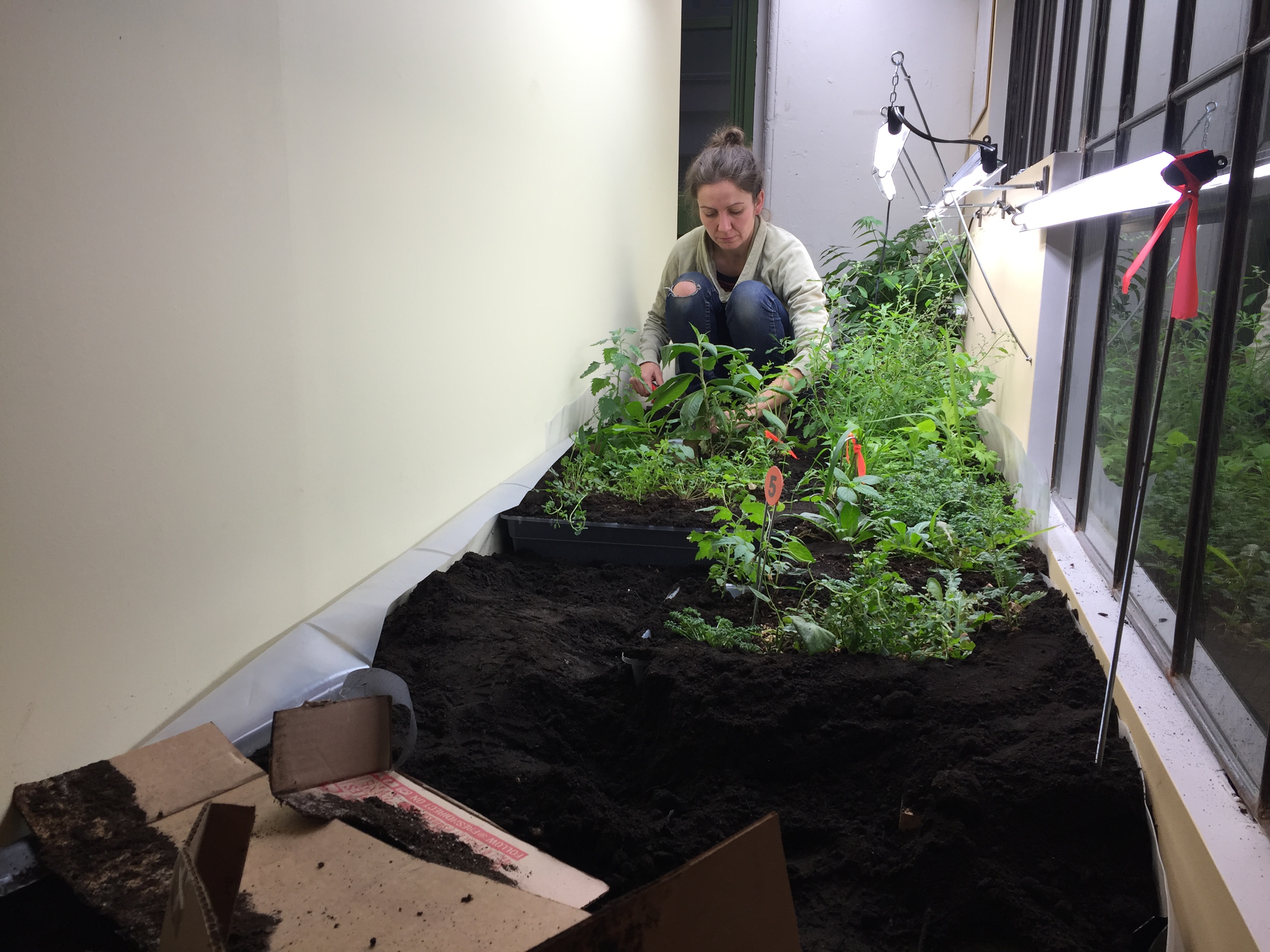
The Sanctuary for Weedy Species in progress, December 2015, Photo credit Dyani Sabin
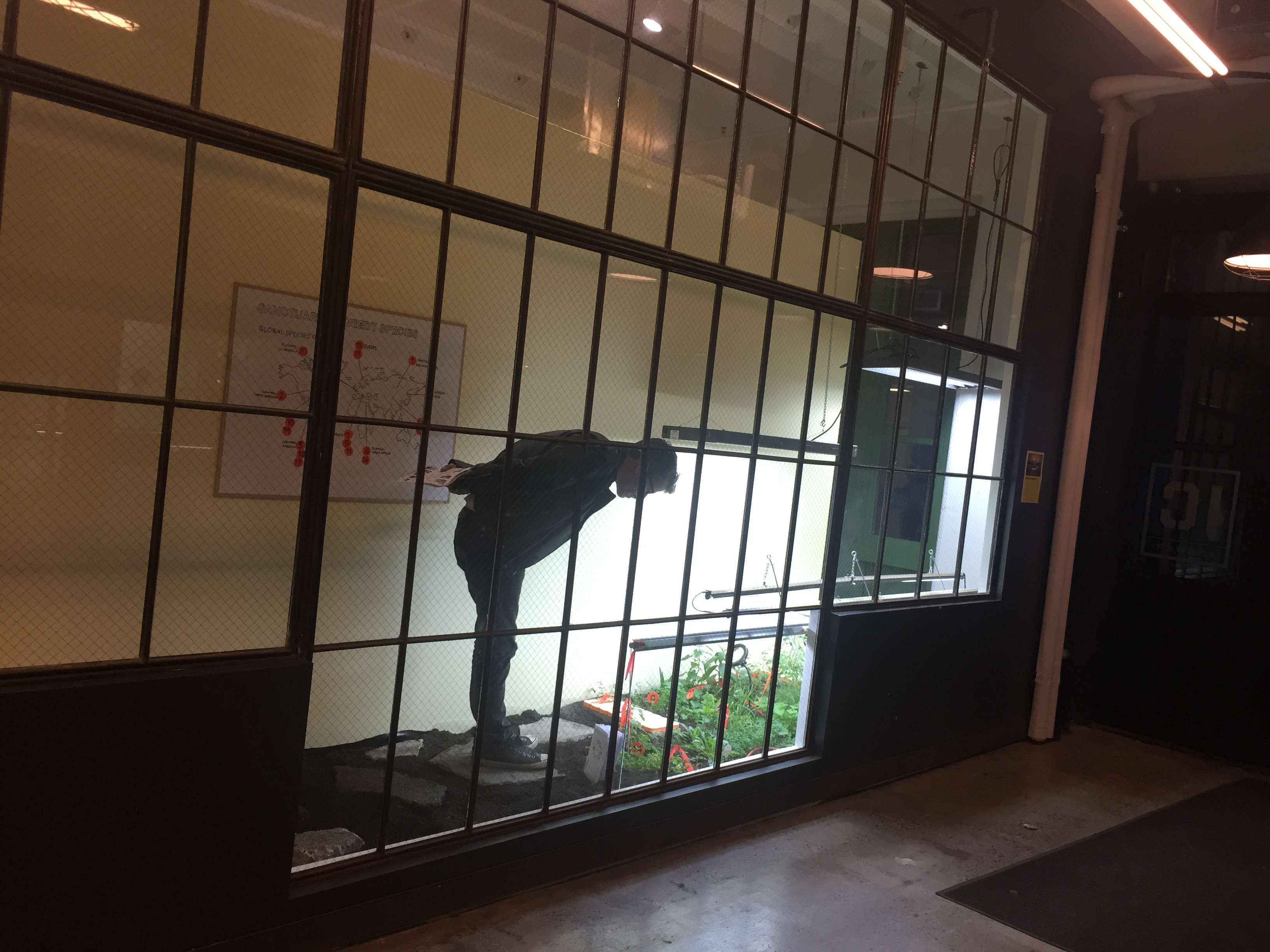
The Sanctuary for Weedy Species, 2015, part of Rail Curatorial’s Social Ecologies exhibition in Industry City, curated by Greg Lindquist. Photo credit Ellie Irons
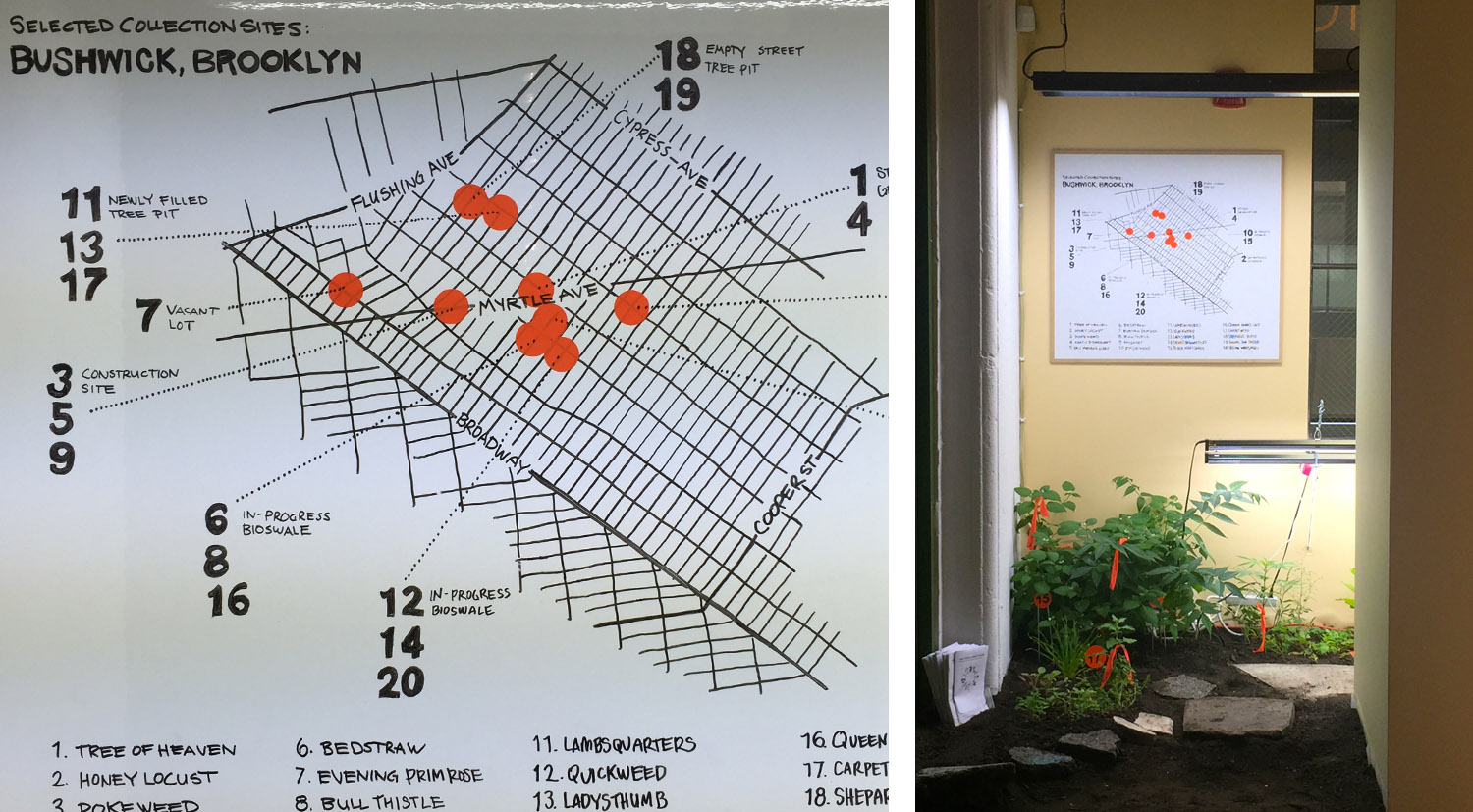
The Sanctuary for Weedy Species, 2015, part of Rail Curatorial’s Social Ecologies exhibition in Industry City, curated by Greg Lindquist. Photo credit Ellie Irons
A German botanist once told me that there was more biodiversity in his city than in the surrounding countryside. Mostly because rural environment is more controlled by agriculture, use of pesticides, etc. whereas in cities, we don’t really pay much attention to what grows and what doesn’t. Is this something you’ve observed in New York as well?
Interesting concept! I’ve heard something along those lines as well. Theoretical ecologist Sasha Wright is someone I’ve worked with on urban ecology issues, and she described to me how combinations of introduced and native species living together in cities can actually produce higher levels of biodiversity than existed before species introductions. She did acknowledge that these more diverse assemblages of species might be repeated more frequently across the world, which gets at the trend of global homogenization. But biodiverse areas, as I understand it, are much more resilient to difficult conditions than less diverse ones, so given the current challenges, especially for urban dwelling species, it seems that having more types of species is desirable, and since they are already here, we might as well work with what we’ve got.
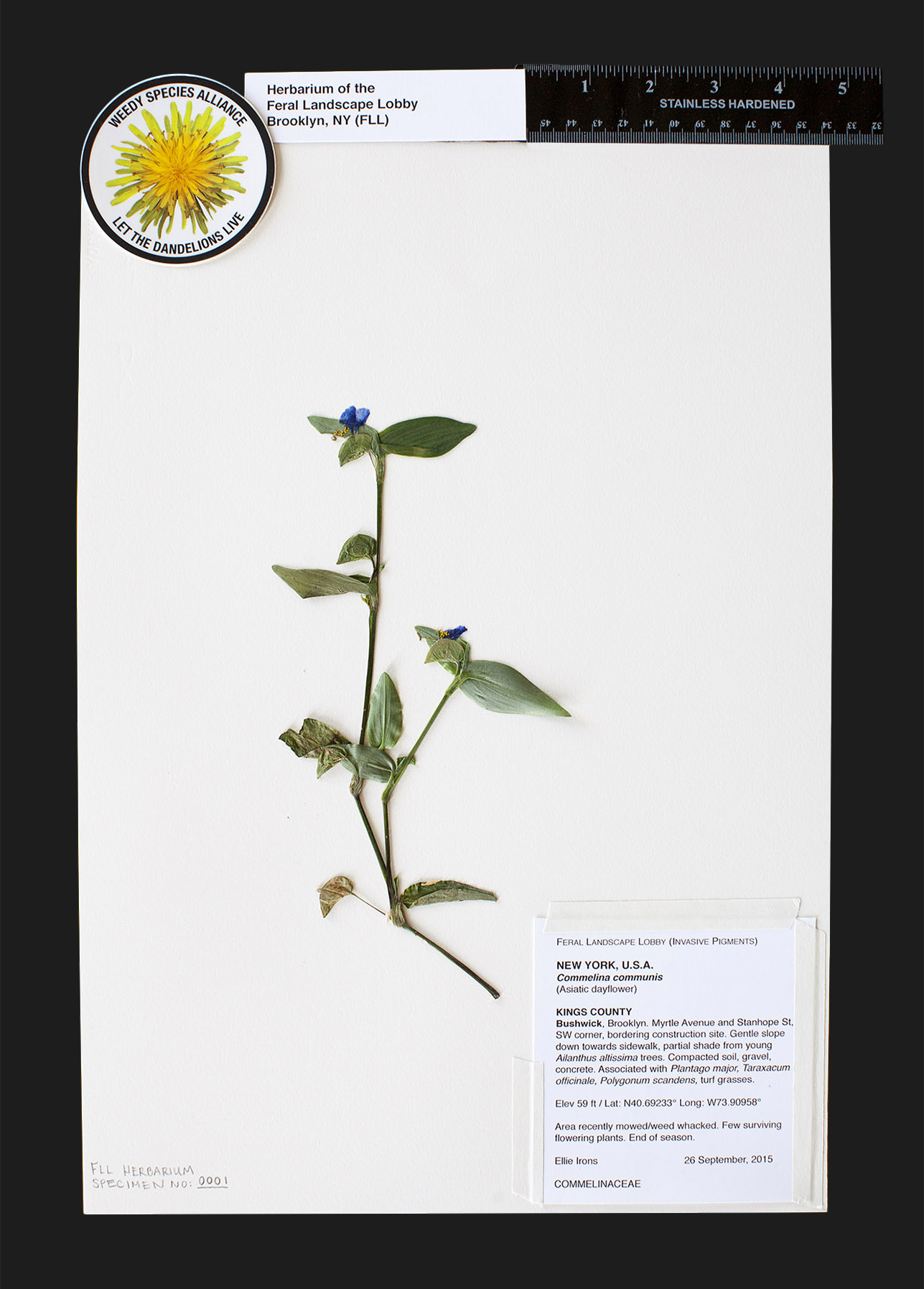
Herbarium of the Feral Landscape Lobby Brooklyn, NY (FLL)
Reading about your work, i realised that the main strengths of the plants you are studying is their resilience, the way they overcome difficult situations and are able to adapt to various environments. Which of course made me think of the ecological crises we are facing. So what could we, humans, learn from observing these plants?
I think I got at some of this in my answers above, but I do have a little more to say. I certainly admire the resilience of weeds, and their ability to thrive even when we ignore or actively attack them. In a poetic sense, they can be a stand in for many kinds of overlooked and under-appreciated life forms, spaces and places. But I’m not sure that metaphor needs to be extended to encompass humans- it already fits us perfectly! We are also weedy (if you like term, invasive) organisms. Just like the weedy plant species of the world, we are able to disperse widely, live in dense populations, and dominate the landscape at the expense of other species. I guess one metaphor I might like to extend is the one of context: not all humans are equally responsible for the ecological crises we find ourselves in; just like its dangerous to universalize and call all green, spontaneously growing organisms weedy invaders, it’s problematic not to address context, history, and social forces when assigning blame and providing care in the face of the climate crises.

Feral Typologies. Triangular corner lot: Broadway at Dekalb Ave., August 2015 and November 2015

Sandwiched lot: 1291 Dekalb Avenue, May 2015 and August 2015

Feral Typologies. Corner lot: Suydam St. and Central Avenue, May 2015 and July 2015
What could we do with the wild spaces that still exist in urban environments? I think we all agree they shouldn’t be left in the hands of real estate speculators. So should we let them grow wild and in peace? Turn them into community gardens? Or something in between?
All of the above! I think its great for communities to invest in a piece of land and garden it. In this context my beloved weedy species might get pulled out early in the season (and hopefully eaten- so many are edible!) to make way for cultivated crops. But I would love to think there is also room for wild, unplanned landscapes to exist in the midst of the city. I have a little (as yet largely unrealized) project called the Feral Landscape Lobby that advocates for the existence of wild spaces in the city. The logic behind this is that many cities, certainly my corner of Brooklyn, don’t have the resources to manage and maintain large amounts of constructed greenspace. As stated on the project website, the FLL is involved in “Recasting vacant city lots and other undesigned open land as transitory zones for rewilding, emphasizing that these spaces are already functioning ecologically. If properly valued, preserved and stewarded, these ubiquitous “informal greenspaces” can provide a refuge and foothold for nonhuman life while also benefiting local human populations, both ecologically and culturally.” The ultimate goal of the FLL is to create a permanent wild urban park, but for now it mostly consists of temporary interventions, publications and workshops.
I’m trying to be a bit less Euro-centric. It’s difficult because i live in Europe so i tend to be in contact with European artists and organisations. So whose work would you recommend that my readers and i check out in America? Who are the artists doing inspiring works about or with nature?
Oh there are so many, functioning in so many different ways. On one end I love speculative institutions like The Center for Postnatural History, operating out of Pittsburg, or Karolina Sobecka’s in-progress Cloud Services. I also really relate to concrete interventions like Mary Mattingly’s upcoming Swale, and Juanli Carrion’s Outer Seed Shadow. And I so admire the work of artist-activists like Not An Alternative, with their The Natural History Museum, and Brandon Ballengée‘s art and research-based work with endangered amphibians. Finally, being originally from the west coast of the U.S. myself, I’ve long followed the work of California-based artists and organizations like Amy Balkin, Amy Franceschini, Andrea Zittel, the Museum of Jurassic Technology, and The Center for Land Use Interpretation.
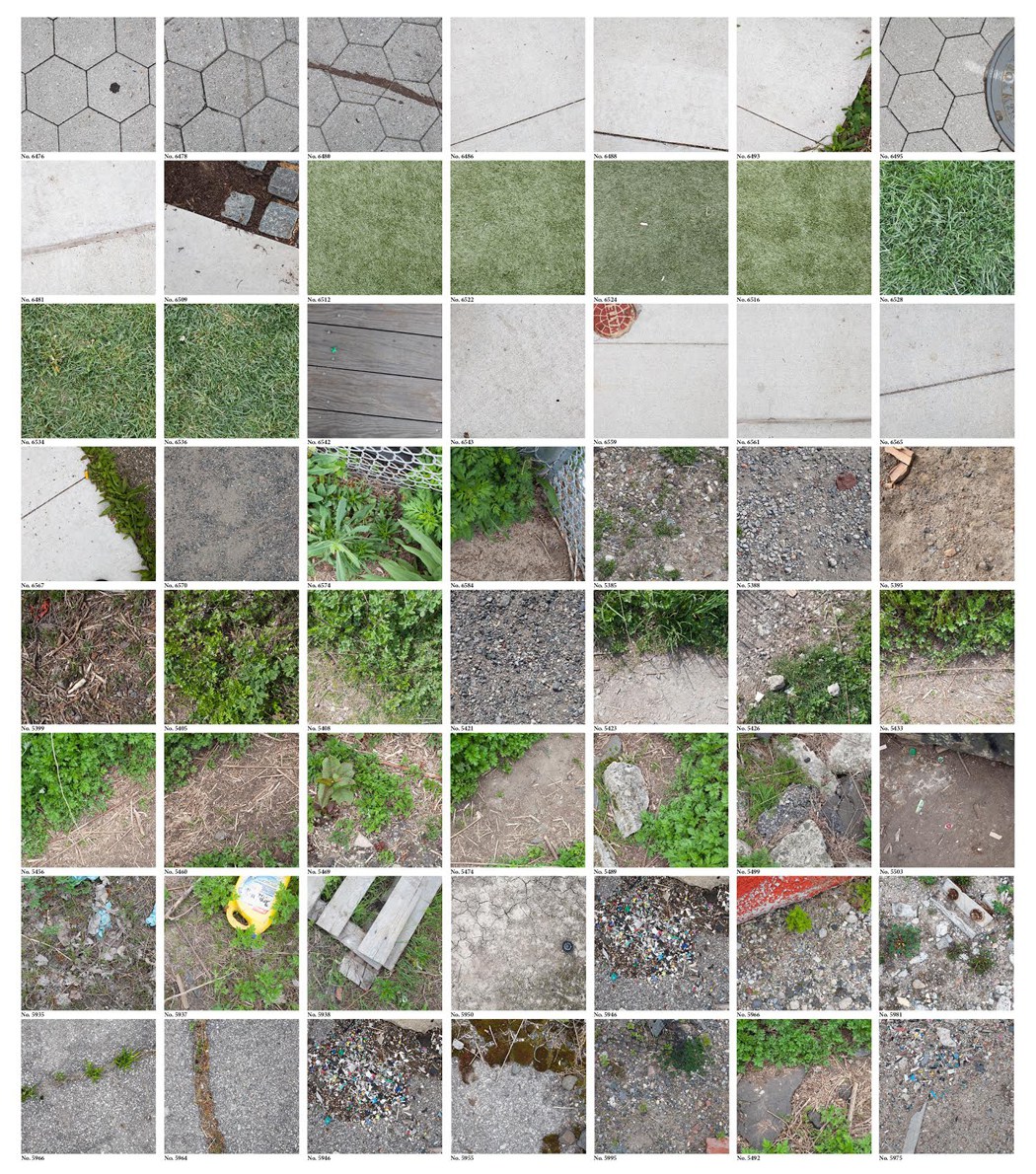
An Atlas of Endangered Surfaces, Photo Grid, 2015, digital print, in collaboration with Christopher Kennedy for Chance Ecologies
Any upcoming shows, projects, fields of research you could share with us?
Sure- there are some exciting things on the horizon. The Next Epoch Seed Library is programming an event called “On Weediness: Dance, Movement, Vegetative Life”. Scheduled for May 15th, the event will include a range of movement specialists and artists who use weediness and plant life to explore connections between people, place and nonhuman life (including Corinne Cappelletti and Eva Perrotta, Andrea Haenggi, Christopher Kennedy and Lucia Monge). The event is taking place as part of Emergent Ecologies, a sprawling show in an empty metal ceiling factory with more than eighty artists involved. I helped curate a handful of them, alongside lead curators Eben Kirksey and Lissette Olivares and a swarm of others! I also just opened a two person show that features my ongoing work with plant pigments. Titled Chroma Botanica, it pairs me with Linda Stillman, another artist who uses plant pigments in her work. That show will be up through June 14th at a very enjoyable location: the Arsenal Gallery in Central Park. We’ll be giving tours and demos of our pigment-making processes on May 17th and 24th. Otherwise I’m looking forward to getting out into some wild landscapes this summer, urban and otherwise!
Thanks Ellie!

